#extractive industries
Text
A fascinating application of both radioisotope and stable-isotope tracer techniques, with intriguing implications for managing water resources. Of course, lithium and even copper are less critical materials if we emphasize atomic power rather than wind and solar, not only because of a smaller requirement for storage batteries, but also because fission heat can be applied directly in many uses.
1 note
·
View note
Text
Endangered Indian sandalwood. British war to control the forests. Tallying every single tree in the kingdom. European companies claim the ecosystem. Spices and fragrances. Failure of the plantation. Until the twentieth century, the Empire couldn't figure out how to cultivate sandalwood because they didn't understand that the plant is actually a partial root parasite. French perfumes and the creation of "the Sandalwood City".
---
Selling at about $147,000 per metric ton, the aromatic heartwood of Indian sandalwood (S. album) is arguably [among] the most expensive wood in the world. Globally, 90 per cent of the world’s S. album comes from India [...]. And within India, around 70 per cent of S. album comes from the state of Karnataka [...] [and] the erstwhile Kingdom of Mysore. [...] [T]he species came to the brink of extinction. [...] [O]verexploitation led to the sandal tree's critical endangerment in 1974. [...]
---
Francis Buchanan’s 1807 A Journey from Madras through the Countries of Mysore, Canara and Malabar is one of the few European sources to offer insight into pre-colonial forest utilisation in the region. [...] Buchanan records [...] [the] tradition of only harvesting sandalwood once every dozen years may have been an effective local pre-colonial conservation measure. [...] Starting in 1786, Tipu Sultan [ruler of Mysore] stopped trading pepper, sandalwood and cardamom with the British. As a result, trade prospects for the company [East India Company] were looking so bleak that by November 1788, Lord Cornwallis suggested abandoning Tellicherry on the Malabar Coast and reducing Bombay’s status from a presidency to a factory. [...] One way to understand these wars is [...] [that] [t]hey were about economic conquest as much as any other kind of expansion, and sandalwood was one of Mysore’s most prized commodities. In 1799, at the Battle of Srirangapatna, Tipu Sultan was defeated. The kingdom of Mysore became a princely state within British India [...]. [T]he East India Company also immediately started paying the [new rulers] for the right to trade sandalwood.
British control over South Asia’s natural resources was reaching its peak and a sophisticated new imperial forest administration was being developed that sought to solidify state control of the sandalwood trade. In 1864, the extraction and disposal of sandalwood came under the jurisdiction of the Forest Department. [...] Colonial anxiety to maximise profits from sandalwood meant that a government agency was established specifically to oversee the sandalwood trade [...] and so began the government sandalwood depot or koti system. [...]
From the 1860s the [British] government briefly experimented with a survey tallying every sandal tree standing in Mysore [...].
Instead, an intricate system of classification was developed in an effort to maximise profits. By 1898, an 18-tiered sandalwood classification system was instituted, up from a 10-tier system a decade earlier; it seems this led to much confusion and was eventually reduced back to 12 tiers [...].
---
Meanwhile, private European companies also made significant inroads into Mysore territory at this time. By convincing the government to classify forests as ‘wastelands’, and arguing that Europeans would improves these tracts from their ‘semi-savage state’, starting in the 1860s vast areas were taken from local inhabitants and converted into private plantations for the ‘production of cardamom, pepper, coffee and sandalwood’.
---
Yet attempts to cultivate sandalwood on both forest department and privately owned plantations proved to be a dismal failure. There were [...] major problems facing sandalwood supply in the period before the twentieth century besides overexploitation and European monopoly. [...] Before the first quarter of the twentieth century European foresters simply could not figure out how to grow sandalwood trees effectively.
The main reason for this is that sandal is what is now known as a semi-parasite or root parasite; besides a main taproot that absorbs nutrients from the earth, the sandal tree grows parasitical roots (or haustoria) that derive sustenance from neighbouring brush and trees. [...] Dietrich Brandis, the man often regaled as the father of Indian forestry, reported being unaware of the [sole significant English-language scientific paper on sandalwood root parasitism] when he worked at Kew Gardens in London on South Asian ‘forest flora’ in 1872–73. Thus it was not until 1902 that the issue started to receive attention in the scientific community, when C.A. Barber, a government botanist in Madras [...] himself pointed out, 'no one seems to be at all sure whether the sandalwood is or is not a true parasite'.
Well into the early decades of twentieth century, silviculture of sandal proved a complete failure. The problem was the typical monoculture approach of tree farming in which all other species were removed and so the tree could not survive. [...]
The long wait time until maturity of the tree must also be considered. Only sandal heartwood and roots develop fragrance, and trees only begin developing fragrance in significant quantities after about thirty years. Not only did traders, who were typically just sailing through, not have the botanical know-how to replant the tree, but they almost certainly would not be there to see a return on their investments if they did. [...]
---
The main problem facing the sustainable harvest and continued survival of sandalwood in India [...] came from the advent of the sandalwood oil industry at the beginning of the twentieth century. During World War I, vast amounts of sandal were stockpiled in Mysore because perfumeries in France had stopped production and it had become illegal to export to German perfumeries. In 1915, a Government Sandalwood Oil Factory was built in Mysore. In 1917, it began distilling. [...] [S]andalwood production now ramped up immensely. It was at this time that Mysore came to be known as ‘the Sandalwood City’.
---
Text above by: Ezra Rashkow. "Perfumed the axe that laid it low: The endangerment of sandalwood in southern India." Indian Economic and Social History Review 51, no. 1, pages 41-70. March 2014. [Bold emphasis and some paragraph breaks/contractions added by me. Italicized first paragraph/heading in this post added by me. Presented here for commentary, teaching, criticism purposes.]
#a lot more in full article specifically about#postindependence indian nationstates industrial extraction continues trend established by british imperial forestry management#and ALSO good stuff looking at infamous local extinctions of other endemic species of sandalwood in south pacific#that compares and contrasts why sandalwood survived in india while going extinct in south pacific almost immediately after european conques#abolition#ecology#imperial#colonial#landscape#indigenous#multispecies#tiger#tidalectics#archipelagic thinking#intimacies of four continents#carceral geography#geographic imaginaries#haunted
220 notes
·
View notes
Text
mfs do anything but finish their wips . like startign another, for example
#trigun sky au. because i can.#light-guide (mainly) vash . usually assumed to be either isle or valley born. witnessed the fall#realm-guide wolfwood . isle born. very fond of moths/sparrows#vault scribes(?) meryl and milly . both vault born but people sometimes assume milly to be of prairie. they document spirit tradition-#slash seasons slash events idk anyting to do w preservation im thinking#knives and vash are light twins...#eden-guide knives... people assume hes vault born or somethinf. also witnessed the fall and is not very fond of spirits#hes a huge fucking fan of both creatures of light and darkness though#slander a dark dragon near him he will jump you . slash jay. . slash not j#angry at the whole industrialization thing that turned forest to what it is#see the fun thing about taking a game that doesnt have very very deep lore sans concept art (WHIHCH IM STILL SO FUCKING SAD ABT. ITS SO???)#is that you can just throw whatever at it to your liking#FOR EXAMPLE. SHARD RAINS? THAT WAS PART OF MY SKY UNIVERSE WAY BEFORE SHATTERING . THAT WAS WHAT CAUSSED THE FALL PARTIALLY SHFJHFHG#anyways s more or less implied that there was some form of mineral extraction in forest#and the rain there has literally no reason to drain your light . waters fine and everythnig. so something happened#and the trees looking so dead etc presence of crabs and gloomy skies in contrast to the brighter ones of previous areas#vash and knives occasionally do eden guiding together#iuhhhhhdk . i think wolfwood would but specifically for skykids who are going through their first run#milly and meryl at the season of remembrance..#meryl fond of valley races in secret milly big fan of tournaments they both ice skate at the dreams village and visit performance theater#because i SAY SO#brad luida home. vault born mostly vault dwellers see season of remembrance. uh idk big on trying to understand and improve technology#and contraptions left behind by spirits#“wow mr vash mr knives . you both sure do know the ins and outs of the realms!” and they both give eachother looks like WE WERE THERE WHEN#THE KINGDOM IN THE SKY FELL#rems a spirit beeteedubs .#twins thought they were the first skykids. stage whisper tesla#mhhhhhh vash loses his arm to a shard....#think. the plant trio all have like... a higher concentration of light than even creatures of light themselves#gate equivalent ig?
20 notes
·
View notes
Text
i did it u_u
#actually rather pleased with my Bronze Age abstract#Advisor is going to demolish the Other one but that's okay because I at least did something so I got the practice and I can sleep now.#It's kind of funny I was writing the Bronze Age one and I can already feel the struggle of compressing a dissertation's worth#of information into 15 minutes. Like ffs I'm supposed to speedrun oil as an extraction reductant and also talk about Egypt's alum trade?#But this is My Fault. I have done this to myself.#Okay but I'm already bubbling with excitement to talk about Leather Tanning again. Nobody was here when I went on this massive#5 hour long rabbit hole of leather tanning research because... I think I was trying to find out if you could use mushroom collagen#to replicate leather? (The answer is yes.) But it took me down this road of Leather tanning because I was trying to understand the#ion exchange that makes it supple and TLDR there's this massive exploitative industry in the Middle East and Southeast Asia that uses#Cobalt salts because the Co 3+ sits really nicely in the collagen site and you can quickly dye and destroy most of the organics from the#animal itself; but because of that you've also destroyed the texture of the leather. I forget why Al 3+ isn't used. I think it's because it#weathers over time and the leather becomes stiff and hard again. Same with Fe3+. ANYWAY. Try and find thick leather when you#do buy leather because leather IS great and I will die(dye) on this hill. But it's the exploitative textile industry that causes problems.#Honestly I've forgotten 90% of the chemistry but it's so fucking cool and a really interesting peek into an organic affected by inorganics#rather than affecting an inorganic mineral with organics. UGH I love chemistry so much. It's so fucking cool.#ptxt#christ this might be my worst tag essay lol
10 notes
·
View notes
Text
Fiery Flavour: The Art and Science of Crafting Jalapeno Sauce in India
Jalapeno sauce is a culinary delight that adds a fiery kick to dishes, tantalizing taste buds with its bold flavor profile. In recent years, this spicy condiment has gained popularity not only in India but also across the globe, including in the United Arab Emirates (UAE). As a leading manufacturer in India, Modern Food Products is dedicated to mastering the art and science of crafting premium Jalapeno sauce that satisfies the cravings of spice enthusiasts everywhere. In this blog post, we shall delve into the intricate process of producing Jalapeno sauce, explore its growing demand in the UAE market, and highlight the private labelling services offered by Modern Food Products to cater to diverse customer needs.
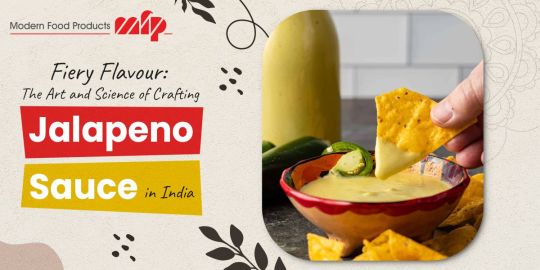
The Essence of Jalapeno Sauce
Jalapeno sauce is more than just a condiment; it is a culinary experience that combines heat, flavor, and versatility. At Modern Food Products, we understand the importance of capturing the essence of fresh Jalapeno peppers to create a sauce that excites the palate. Our Jalapeno sauce is crafted using premium-quality Jalapeno peppers sourced from trusted growers, ensuring optimal flavor and heat levels that elevate any dish.
The Art of Crafting Jalapeno Sauce
Crafting the perfect Jalapeno sauce requires a delicate balance of ingredients and meticulous attention to detail. Here is a glimpse into the artistry behind our Jalapeno sauce production process:
1. Ingredient Selection: We start by hand-selecting the finest Jalapeno peppers, ensuring they are ripe, firm, and bursting with flavor. Alongside Jalapenos, we carefully choose complementary ingredients such as vinegar, garlic, onions, and spices to enhance the sauce's depth and complexity.
2. Roasting and Blending: To unlock the full flavor potential of Jalapeno peppers, we roast them to perfection, imparting a smoky undertone to the sauce. The roasted Jalapenos are then blended with other ingredients to achieve a smooth and consistent texture, ensuring every bite delivers a burst of fiery flavor.
3. Cooking and Seasoning: The blended ingredients are cooked down to intensify the flavors and achieve the desired consistency. Throughout the cooking process, we meticulously season the sauce with the perfect balance of salt, sugar, and spices, ensuring a harmonious flavor profile that leaves a lasting impression.
4. Packaging: Once the Jalapeno sauce reaches its optimal flavor and texture, it is carefully packaged in jars or bottles designed to preserve freshness and extend shelf life. Our packaging solutions are not only functional but also visually appealing, reflecting the premium quality of our Jalapeno sauce.
Jalapeno Sauce: A Spicy Sensation in the UAE Market
The UAE market has a growing appetite for bold and flavorful condiments, making Jalapeno sauce a popular choice among consumers. As a leading Jalapeno sauce manufacturer in India, Modern Food Products is proud to serve the UAE market with our premium-quality products. Whether used as a dipping sauce, marinade, or flavor enhancer, our Jalapeno sauce adds an irresistible zing to a wide range of dishes, from sandwiches and tacos to grilled meats and seafood.
Private Labelling Services for Custom Solutions
At Modern Food Products, we understand that every customer has unique preferences and requirements. That is why we offer comprehensive private labelling services to cater to diverse needs and preferences. Whether you are a retailer, distributor, or foodservice provider in the UAE looking to offer Jalapeno sauce under your own brand, we can collaborate with you to create custom solutions that align with your brand identity and specifications.
Our private labelling services encompass:
Custom Formulation: We work closely with clients to develop custom formulations tailored to their desired flavor profile, heat level, and packaging preferences. Whether you prefer a mild, medium, or hot Jalapeno sauce, we can adjust the recipe to meet your specifications.
Branding and Packaging: Our team of graphic designers can assist you in designing eye-catching labels and packaging that showcase your brand identity and appeal to your target audience. From label design to bottle customization, we ensure that your private label Jalapeno sauce stands out on the shelves.
Quality Assurance: As a trusted Jalapeno sauce manufacturer, we adhere to strict quality control measures throughout the production process to ensure consistency, safety, and compliance with regulatory standards. With our private labelling services, you can rest assured that your branded Jalapeno sauce meets the highest quality standards.
Conclusion
In conclusion, Jalapeno sauce is a spicy sensation that has captured the hearts and taste buds of consumers in India and the UAE alike. At Modern Food Products, we take pride in our expertise in crafting premium Jalapeno sauce that delivers unparalleled flavor and quality. Whether you are a consumer seeking an authentic Jalapeno sauce experience or a business looking to launch your own private label Jalapeno sauce, we have the resources and capabilities to meet your needs. Contact us today to explore our range of Jalapeno sauce products and private labelling services, and elevate your culinary creations with a touch of fiery flavor.
#Jalapeno sauce suppliers in UAE#Jalapeno sauce manufacturing industries in UAE#Jalapeno sauce manufacturer in UAE#Private labelling services in India#extracts#flavor#hot sauce#ketchup#canned foods#bottled items#Kitchen#condiments#restaurants#Hotels#fast food#sauces#UAE#India
7 notes
·
View notes
Text
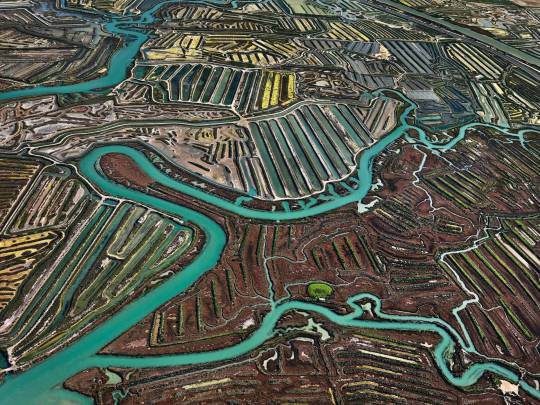
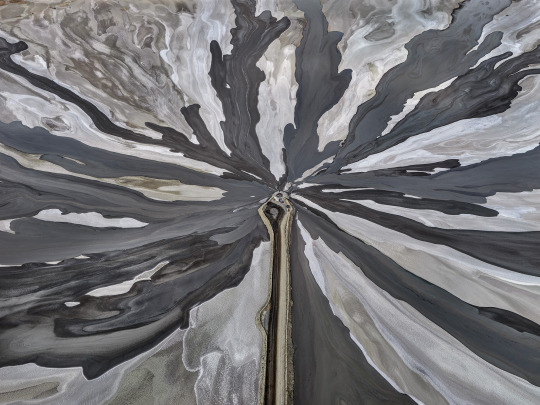


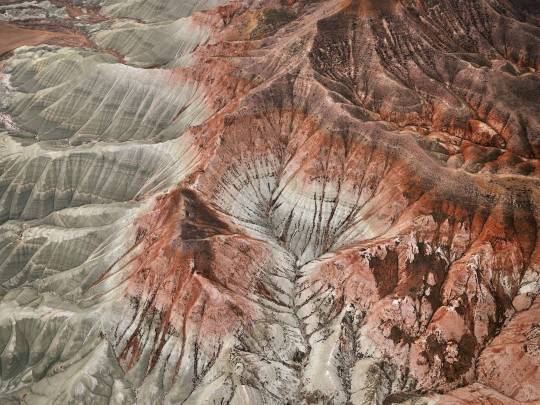

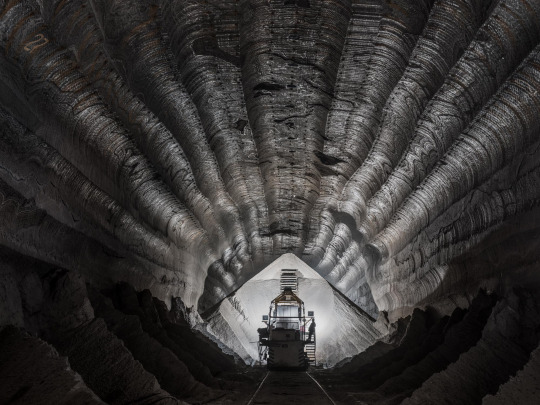



Edward Burtynsky, "Extraction/Abstraction"
“I have spent over 40 years bearing witness to the ways in which modern civilization has dramatically transformed our planet. At this time, the awareness of these issues presented by my large format images has never felt more urgent. I hope the exhibition experience will continue to provide inflection points for diverse conversations on these issues and move us all to a place of positive action.”
_Edward Burtynsky
Courtesy: Saatchi Gallery
Saatchi Gallery acknowledge the support of the Canada Council for the Arts
#art#photography#nature rights#extraction#pollution#edward burtynsky#earth#no planet b#saatchi gallery#contamination#human footprint#industrialization#acid rain
7 notes
·
View notes
Text
We really need to dismantle the ag industry in the US like yesterday.
#woolly rambles#its the nasda meetings that always manage to drive home how this industry is focusing on extracting capital from stressed lands#not on feeding people or responsible land stewardship or whatever else they like to claim the industry is#kill it and never look back
6 notes
·
View notes
Text
@allthecanadianpolitics @bcpoli
#please sign this petition#mining#resource extraction#bc politics#industry#regulate industry#landback#indigenous people#indigenous land#how will you resist?
68 notes
·
View notes
Text
okay, who wants to learn about the (potential) return of the Dust Bowl?
I'm trying to figure out my audience for a communication project
#me when soil degradation and extractive industrial farming practices and corn subsidies and overproduction and the need to reshape everythi#prof asked how to fix it and i was like. reshape our entire economy#but yeah i'll look into policy too#agroecology#communications#history#the great depression#i'm just tagging random related stuff
4 notes
·
View notes
Text

#i cant wait to see matpats update video on vanilla extract about how the industry has either been boosted or crumbled from people making thi#vanilla extract#cake#polls#vanilla#pure vanilla crk
14 notes
·
View notes
Text
A fish is an exquisite and fascinating creature: a stunning answer to the question of how to live in the sea, one which has been honed by evolution over hundreds of millions of years. Fishmeal is all of that but dried, squashed, and ground up into powder. It's also astonishingly rich in protein: between 50 and 70 percent by weight. And in 1950, farmers were just waking up to its potential.
And so the world bought fishmeal as fast as Chile and Peru could haul anchovetas out of the Humboldt Current, while the lessons from California about the long-term consequences were completely ignored. Between 1950 and 1973, world fish harvests tripled, but the amount of fish directly consumed by humans stayed the same. The rest went to fishmeal, as a supplemental food for livestock, and this became an essential ingredient for modern industrial farming. Britain imported all that it could get and by 1960 half of all fishmeal was being used as pig food. With the addition of industrial farming methods and antibiotics, farmers could grow more pigs more quickly, in less space and for less money. By 1960, Peru was the world's top producer of fishmeal, and in 1964 it caught 40 percent of the entire global fish harvest. When overfishing and environmental conditions caused Peru's fish harvest to collapse in 1972, shutting down the fishmeal supply, the price of British bacon doubled almost immediately.
And so the extraordinary consequence of upwelling water along the coast of South America isn't just that it has produced a huge marine ecosystem in a relatively tiny area. It's that it has provided the biological bounty to feed pigs and chickens (and increasingly, farmed fish grown in other countries) all over the world. Those animals were raised to feed humans, who were probably blissfully unaware of the marine source of their protein, and also its colossal cost to the natural environment.
_ Helen Czerki, The Blue Machine: How the Ocean Works, 2023
#fishmeal#helen czerki#fisheries#humboldt current#anchovies#peru#resource extraction#uk food supply#20th century#industrial livestock operations#global economies
2 notes
·
View notes
Text
[M]onk seals continued to live in large herds along the largely unexplored Atlantic seaboard of northwest Africa. It was not until 1434 that Portuguese explorers landed on these [supposedly] untamed coasts, and discovered thousands of monk seals. Almost immediately, an intensive and lucrative trade in skins and oil was established [...]. Constantly vying with Spain [...], Portugal was determined to increase its sphere of influence in Africa. While Spain eventually became preoccupied with Columbus’ elusive vision [...] [and] his celebrated 1492 expedition [...] Portugal’s colonial influence in Africa was reaching its height by 1500. The first expeditions to Africa’s Gold Coast were recorded for posterity by an official chronicler, Gomes de Zurara [...]. In his book [...] he relates how the Portuguese Infante [royal prince], eager [...], dispatched explorer Afonso Gonçalves Baldaya in a cargo vessel to make contact with the mysterious “moors” or “pagans” who were believed to inhabit the region (Zurara, 1437).
“But these are people, no matter how beastlike they may be,” proclaimed the Infante, “and they need to be governed... I command you to penetrate this land as far as you can and that you work in order to learn about those people, perhaps taking one captive, so that you may become acquainted with them.”
It was in “the year [...] one thousand four hundred and thirty-six” that Alfonso set sail [...]. [T]he barinel eventually reached the shores of the Gold River, the Rio de Oro, situated at the Bay of Dakhla in the western Sahara. [...] Afonso and his crew sighted their first seals. Literally thousands were suddenly in their field of vision. [...] “Upon seeing on a reef at the mouth of the river a large number of sea-wolves,” relates Gomes da Zurara, “which, according to the estimates of some, amounted to five thousand, he ordered killed those that could be killed and had their furs loaded onto the ship [...].” Despite the windfall in skins and oil, Afonso was still dissatisfied, having failed to take captive any of the elusive natives. He therefore ventured a further 50 leagues “to see if he could capture a man or at least a woman or child in order to satisfy the will of his master.” [...]
---
[In] 1437 [...] another Portuguese ship was dispatched to the Gold River to fill its hold with the furs and oil of the sea-wolves. [...] In 1441, [...] the Infante ordered his young wardrobe keeper, Antão Gonçalves, to captain a small ship and return to the Gold River. [...] “[T]he reason for this voyage, as instructed by his Lordship,” writes da Zurara, “was none other than to load that ship with a great quantity of hides and oil from those sea-wolves.” It appears to have been a lucrative undertaking. “ [...]
Antão Gonçalves had fulfilled the command of his master, his ship’s hold brimming with hides and casks, but the young man was eager to pursue his adventures rather than return home as ordered. He assembled his 21-man crew on deck, and addressed them with a rousing speech: “Friends and brothers, our cargo is complete, as you can see, so the principal aim of our mission has been accomplished, and we could well return should we wish to limit our toil…” He then proposed an adventure that would gladden the men’s hearts, providing relief from the laborious and tedious task of hunting, skinning and melting-down seals - a hunt for native slaves [...].
---
These first tentative expeditions to the Gold River paved the way for hunting on a more intensive, industrial scale, with 15th century Portuguese explorers dividing their time between lucrative massacres of seals and the equally profitable slave trade [...].
Indeed, within a few years of the sea wolf discovery, a purpose-built installation to process seal hides and oil had been constructed on Ylha de Lobos [...] in the estuary of the Rio de Oro [...]. Around Cap Barbas [...] no less than three sites once bore the name of the sea wolf [...]. [T]he [French and British] colonial plundering of the region [in the early twentieth century] [...], like [...] [Portuguese] conquest before them, were also portrayed as essentially idealistic endeavours. Just as the conquest of the Rio de Oro by massacre and slavery [...] “proves anew that the pursuit of disinterested geographical knowledge [...] were never the only motives of colonial conquest, so the slaughter [...] [today] would today be called “rational exploitation” [...]”,
---
All text above by: William M. Johnson. “Monk Seals in Post-Classical History: The role of the Mediterranean monk seal (Monachus monachus) in European history and culture, from the fall of Rome to the 20th century”. Mededelingen 39. The Netherlands Commission for International Nature Protection. 2004. [Bold emphasis and some paragraph breaks/contractions added by me. Presented here for commentary, teaching, criticism purposes.]
#something about fifteenth century spanish in caribbean and portuguese in africa really lays bare#the close connection between industrial extraction of plants and animal products and the racist labor and enslavement#columbus and spanish settlers only decades later would boast of mass slaughter of the caribbean monk seal while enslaving locals#abolition#ecology#imperial#colonial#caribbean#extinction#monk seals#multispecies#indigenous#tidalectics#archipelagic thinking#ecologies#geographic imaginaries
107 notes
·
View notes
Text
take a shot anytime someone on this website makes an incorrect assumption about an industry they’re a consumer in and then gets performatively angry about something they made up, die of alcohol poisoning and secondhand embarrassment so strong it vaporizes your entire body out of reality
#i know it’s the making things up website but my god some of the bitches here are dumb as fuck#the state of the games industry is not the fault of game devs you cringe idiots#it’s capitalism! it’s the suits in triple A making choices for the bottom line and not artistic integrity#because video games have never been profitable and they’re trying to extract as much as they can
2 notes
·
View notes
Text
Bayou City Hemp and 8th Wonder Brewery team up to produce cannabis-infused beverages for Texas market.
Bayou City Hemp and 8th Wonder Brewery team up for cannabis-infused beverages in Texas. Compliant with federal and state laws. #cannabisbeverages #texasmarket
Bayou City Hemp Company, 8th Wonder Brewery, and Flood Independent Distribution Team have announced their plan to produce and distribute cannabis-infused beverages across Texas.
Bayou City Hemp Company will be responsible for the formulation and manufacturing of these offerings, while Flood Distribution will be responsible for their distribution. The initial selection of cannabis-infused…
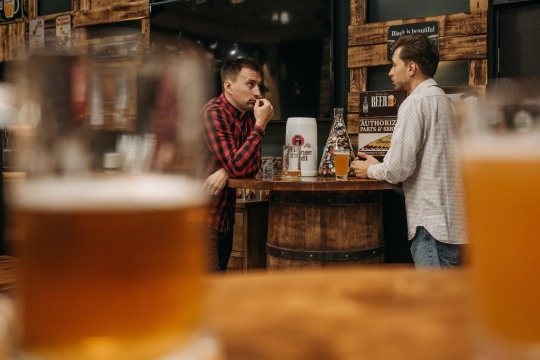
View On WordPress
#8th Wonder Brewery#Bayou City Hemp Company#cannabis-infused beverages#CO2 extraction#Delta 8#Delta 9 THC#Flood Independent Distribution Team#Happi#hemp#Lil Bit#nano-emulsion technologies#national beverage industry.#Texas market#Trillionaire#Wonder Water
3 notes
·
View notes
Text
The Future of Food How Modern Food Products is Pioneering Next-Generation Culinary Technology
Introduction:
Welcome to the future of food, where innovation and technology converge to redefine the culinary landscape. As a leading food product company in India, with roots firmly planted in Gujarat and a thriving presence in Vadodara, Modern Food Products is at the forefront of the next-generation culinary revolution. Join us as we explore the cutting-edge technologies shaping the future of the food product industry and how Modern Food Products is leading the charge.

The Evolution of the Food Product Industry:
The food product industry has come a long way from traditional recipes and manual processes. In today's fast-paced world, consumers seek convenience without compromising on quality, flavor, or nutritional value. This demand has paved the way for a new era in the food industry, one driven by innovation and advanced culinary technology.
Modern Food Products: A Pioneer in Culinary Technology
1. State-of-the-Art Facilities in Gujarat:
Nestled in the heart of Gujarat, Modern Food Products boasts state-of-the-art facilities equipped with the latest advancements in food processing technology. Our commitment to excellence is reflected in every aspect of our operations, from sourcing raw materials to the final packaging.
2. Innovative Food Processing Techniques:
Our dedication to pioneering next-generation culinary technology is evident in the innovative techniques we employ. From precision-controlled cooking processes to cutting-edge preservation methods, we ensure that our products not only meet but exceed industry standards.
3. Focus on Quality Ingredients:
As a leading food product company in Gujarat, our journey begins with the careful selection of high-quality ingredients. We work closely with local farmers and suppliers to source the freshest produce, ensuring that our products are a testament to the rich agricultural heritage of Gujarat.
4. Customized Solutions for Modern Lifestyles:
Understanding the dynamic nature of modern lifestyles, we tailor our products to meet the diverse needs of today's consumers. Whether it's ready-to-eat meals, healthy snacks, or gourmet ingredients, Modern Food Products provides a range of options that seamlessly integrate into contemporary living.
5. Nutritional Innovation:
Modern consumers are more health-conscious than ever before. In response to this trend, our culinary experts and nutritionists collaborate to create products that not only tantalize the taste buds but also contribute to a balanced and healthy lifestyle.
Modern Food Products in Vadodara: A Hub of Culinary Excellence
Vadodara, with its rich cultural heritage and vibrant culinary scene, serves as a strategic hub for Modern Food Products. Our presence in this dynamic city allows us to tap into local flavors and preferences, ensuring that our products resonate with the diverse tastes of the region.
1. Community Engagement:
We believe in fostering a strong connection with the community. Through partnerships with local businesses and initiatives that support sustainable practices, Modern Food Products aims to contribute to the economic and social development of Vadodara.
2. Culinary Workshops and Events:
Modern Food Products is not just a company; it's a culinary hub. Our facilities in Vadodara host workshops, events, and collaborative initiatives that bring together food enthusiasts, chefs, and industry experts to share knowledge and explore the future of food.
The Future Unveiled: What's Next for Modern Food Products?
As we stand on the cusp of a new era in the food product industry, Modern Food Products is poised to continue its journey of innovation and excellence. Our commitment to pioneering next-generation culinary technology, combined with our roots in Gujarat and a strong presence in Vadodara, positions us as a leader in shaping the future of food.
Conclusion:
The future of food is here, and Modern Food Products is not just adapting to it; we are driving the change. As a prominent food product industry in Vadodara, deeply rooted in Gujarat and thriving in Vadodara, we invite you to join us on this exciting journey. Experience the fusion of tradition and technology, taste the excellence of quality ingredients, and witness the evolution of the culinary landscape with Modern Food Products. The future is now, and it's delicious!
#Food product company in India#Food Product company in Gujarat#Food product industry in Vadodara#Food processing companies in Gujarat#Food manufacturing companies in Vadodara#Food industries in Vadodara#Food exporter company in Vadodara#Culinary#Condiments#Restaurants#Hotels#Private Labeling company#Private Label Services#Flavor#Extract#hotsauce#catchup#manufacturer#India#Vadodara#Gujarat#taste#food#fastfood
6 notes
·
View notes
Text
upset about industrial dust inhalation disease again, so i have cleverly chosen it as my research guide topic
#i have to justify why i'm making a guide on this topic & i'm trying to decide how strident about it i plan to be lol#persistent inattention to the extractive industries!!!! infuriating!!!!#is apparently my tag for being upset about people not thinking about mining all the time. i don't know nearly enough about mining. guilt#technically i'm a grad student#irredeemable whining#my most neurotypical activity: crying about black lung while having zero (0) personal connection to black lung#except inasmuch as we are all implicated in the coal industry i suppose
5 notes
·
View notes